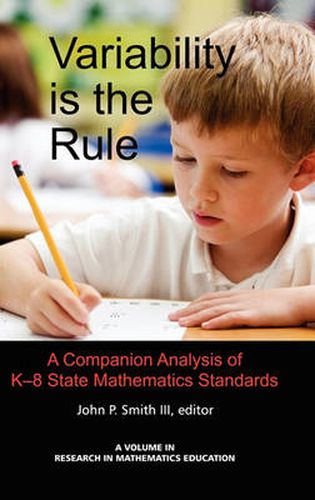Readings Newsletter
Become a Readings Member to make your shopping experience even easier.
Sign in or sign up for free!
You’re not far away from qualifying for FREE standard shipping within Australia
You’ve qualified for FREE standard shipping within Australia
The cart is loading…






This title is printed to order. This book may have been self-published. If so, we cannot guarantee the quality of the content. In the main most books will have gone through the editing process however some may not. We therefore suggest that you be aware of this before ordering this book. If in doubt check either the author or publisher’s details as we are unable to accept any returns unless they are faulty. Please contact us if you have any questions.
A volume in Research in Mathematics Education Series Editor Barbara J. Dougherty, Iowa State University In response to No Child Let Behind, states have developed mathematics curriculum frameworks that outline their intended curriculum for grades K-8. While some have indicated that districts or individual schools may use their framework as a model for specific curricular programs, others have taken a more prescriptive or even mandatory stance. Collectively, these frameworks present a sense of the national mathematics program and what we expect students learn. This volume follows The Intended Curriculum as Represented in State Mathematics Curriculum Standards: Consensus or Confusion? (Reys). While the Reys volume focused on number and operations, algebra and reasoning strands, the Smith volume analyzes geometry, measurement, probability, and statistics strands. It also presents an analysis what verbs used tell us about the cognitive demand of grade level expectations. This volume, even more than the Reys volume, emphasizes the theme of variability in the content, expression, and clarity of grade level expectations across the states. As the nation moves toward implementation of the Common Core Standards, this volume highlights some of the challenges teachers and other school personnel face in interpreting mathematics grade-level standards as goals for classroom teaching. The shift from 50 state standards to one document does not resolve this basic challenge.
$9.00 standard shipping within Australia
FREE standard shipping within Australia for orders over $100.00
Express & International shipping calculated at checkout
This title is printed to order. This book may have been self-published. If so, we cannot guarantee the quality of the content. In the main most books will have gone through the editing process however some may not. We therefore suggest that you be aware of this before ordering this book. If in doubt check either the author or publisher’s details as we are unable to accept any returns unless they are faulty. Please contact us if you have any questions.
A volume in Research in Mathematics Education Series Editor Barbara J. Dougherty, Iowa State University In response to No Child Let Behind, states have developed mathematics curriculum frameworks that outline their intended curriculum for grades K-8. While some have indicated that districts or individual schools may use their framework as a model for specific curricular programs, others have taken a more prescriptive or even mandatory stance. Collectively, these frameworks present a sense of the national mathematics program and what we expect students learn. This volume follows The Intended Curriculum as Represented in State Mathematics Curriculum Standards: Consensus or Confusion? (Reys). While the Reys volume focused on number and operations, algebra and reasoning strands, the Smith volume analyzes geometry, measurement, probability, and statistics strands. It also presents an analysis what verbs used tell us about the cognitive demand of grade level expectations. This volume, even more than the Reys volume, emphasizes the theme of variability in the content, expression, and clarity of grade level expectations across the states. As the nation moves toward implementation of the Common Core Standards, this volume highlights some of the challenges teachers and other school personnel face in interpreting mathematics grade-level standards as goals for classroom teaching. The shift from 50 state standards to one document does not resolve this basic challenge.